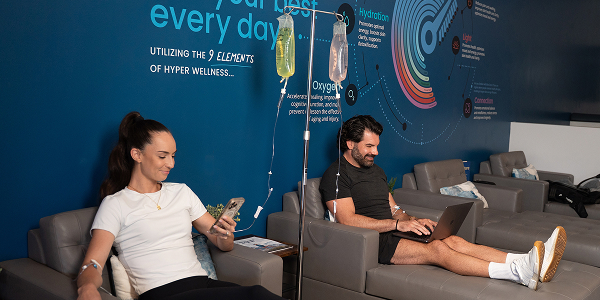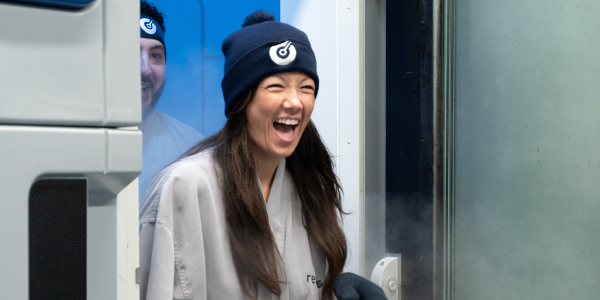Historically, exposure to cold and respiratory illnesses have been inextricably tied to one another. Indeed, the very name of the "common cold" harkens to this association.
Heck, even now my mom will remind me to make sure to wear a coat lest I "catch my death of cold."
Now, to be fair, there is usually a grain of truth in these old sayings, and that certainly is the case here as well. Respiratory viruses, like cold and flu, are definitely more prevalent when it gets chilly outside.
However, we've come to recognize that seasonality of respiratory viruses probably has more to do with humidity, sunlight, and various behavioral factors that converge in the winter, rather than ambient temperature per se.
In fact, some intriguing research has revealed that cold exposure, such as whole-body cryotherapy, could even help protect you from catching cold or flu!
First, let’s look at where this idea comes from — and how you can harness this yourself.
Revelations from Icy Waters
The earliest research suggesting that cold exposure could be beneficial to the immune system does not come from whole-body cryotherapy, but rather from studies of winter swimmers.
Winter swimming is a traditional activity in Nordic countries, as well as parts of Eastern Europe. It basically just means submerging oneself in water that is around 32°F (0°C).
In other words, swimming under conditions that very few sane people would choose!
Although there is a paucity of epidemiological evidence on this practice, many who engage in winter swimming have claimed that they don’t get sick as frequently or as severely.
For example, in one survey of regular ice swimmers, 40% reported experiencing fewer and shorter infections compared to before they adopted the practice. And when researchers closely tracked upper respiratory tract infection incidence and severity in winter swimmers alongside their cohabiting partners (who were not winter swimmers themselves), they found that the swimmers experienced significantly fewer colds than their partners, despite sharing the same living space.
Why might that be?
To gain some insight into this trend, researchers in Helsinki recruited 20 healthy adults. Among them, 12 were regular winter swimmers, meaning they practiced this more than once a week during the winter, and had done so for on average around seven years. The other eight folks were not regular winter swimmers — and the authors of the paper strongly imply that persuading non-winter swimmers to enroll in this study was a tough sell.
Here’s why: the researchers drew blood from all participants at rest, and then did another blood draw after the subjects were submerged (apparently naked?!) for about a minute in a lake with freezing cold water.
Needless to say, not a study that I would have been particularly eager to participate in.
Anyway, the first thing that the researchers noticed was that the regular winter swimmers had higher concentrations of white blood cells at rest than their non-winter swimming counterparts.
From there, the researchers were interested in seeing whether winter swimming led to long-term adaptations that altered how an individual’s immune system responded to challenging stimuli.
They took blood samples from before and after the subjects had been submerged in the ice water and combined them, in Petri dishes, with lipopolysaccharide (LPS). LPS is a major component of the outer membrane of Gram-negative bacteria, and it reliably triggers an inflammatory response from our immune system.
In the cell cultures from participants who were regular winter swimmers, release of inflammatory cytokines was boosted after being submerged in the cold water — a response that was not shown in the non-winter swimmers.
So the key takeaway here is that winter swimming seems to result in a sustained increase in activity of the innate immune system, through greater numbers of immune cells circulating in the blood.
Furthermore, an acute session of cold treatment seems to elicit a more robust inflammatory response in people who are adapted to cold, which in turn helps attract those white blood cells toward sites where pathogens could be invading.
Evidence From the Lab
Sadly, there aren’t a ton of controlled trials directly examining the effects of cryotherapy on the immune system. But the ones that we do have at our disposal seem to point in largely the same direction as those that observe winter swimmers.
For example, Czech researchers recruited ten healthy young athletes at Charles University in Prague and immersed them in cold water (up to their chest).
After a single session, effects on immune biomarkers were minimal. However, after six weeks of repeated immersions (three times per week), they showed higher levels of an array of immune cells. This further reinforces the importance of long-term adaptations, which we saw in the winter swimmers.
Another trial with a more complex design had seven healthy young men sit in a “climatic chamber,” which is basically a giant human-sized refrigerator, on four different occasions. In this study, cold exposure consistently led to a significant increase in activity of natural killer cells, the immune cells that constitute our first line of defense against viruses.
But here’s what really jumped out at me: when the men exercised beforehand, the white blood cell response to cold exposure was further augmented. Physical activity, in other words, seems to pair nicely with cryotherapy.
Those researchers concluded:
“This study suggests that, despite popular beliefs that cold exposure can precipitate a viral infection, the innate component of the immune system is not adversely affected by a brief period of cold exposure. Indeed, the opposite seems to be the case.”
The Paradox of Stress
So why precisely would whole-body cryotherapy enhance the immune system?
The answer, in brief, is stress.
As you probably know, chronic stress, like from prolonged emotional pressure, tends to lead to a suppressed immune response. Overproduction of the stress hormone cortisol blocks inflammatory mediators that are key for resisting infections. This is why people taking care of family members with dementia are more predisposed to sickness and show less robust immune responses to vaccines.
The experience of bone-chilling cold is also quite stressful (duh). For instance, participants who spent a brief time in a cold chamber exhibited a more than 3-fold increase in levels of norepinephrine.
However, short-term stressors elicit a very different response from the immune system, and this is quite logical when viewed through the lens of evolution.
Our body mobilizes an acute stress response (aka fight-or-flight) when confronted with danger. Your heart rate goes up, blood flow to your muscles increases, digestion slows down, and so on. All of this is exquisitely orchestrated for survival.
Now, think about the kinds of stressors that we would encounter in a natural environment that would trigger a fight-or-flight response. Think a saber-toothed tiger, something like that. It’s not hard to imagine that confrontations like that would often be accompanied by injury or infection, and those who experienced a surge in immune activity would have been more likely to survive. So it makes a ton of sense that our immune system would have evolved to be mobilized in response to an acute stressor — whether it be facing a charging bear, or receiving whole-body cryotherapy.
In other words, stress isn’t necessarily a bad thing. In fact, we need some stress! The physiological impact depends greatly on the duration of the stressor, and your capacity to adapt to it.
Three Tips for Getting the Most Out of Cryotherapy
In the dead of winter, cryotherapy is probably the last thing that you want to do. But from the standpoint of your immune system, there might not be a better time to start.
- Do it regularly. The research described above strongly suggests that the benefits of cryotherapy are mainly accrued through long-term adaptations to cold exposure, meaning engaging in the practice at least once per week.
- Combine it with exercise. Intense physical activity also boosts white blood cell activity, and even helps deploy those white blood cells to areas of the body where they’re needed most, like the lungs and other mucosal surfaces. And exercise seems to have additive immune benefits when performed close to cryotherapy.
- Play it safe. Exposure to extreme temperatures can exacerbate some medical conditions, so consulting with a healthcare practitioner is always a smart move. And winter swimming in particular can be hazardous. Your best bet, in my estimation, is probably whole-body cryotherapy. During these short sessions, you are equipped with protective gear and there’s always trained staff standing by to look after you (also way more comfortable than swimming in icy water!).
Curious about Whole Body Cryotherapy at Restore? We can help.
Photo by Jenna Kahn






